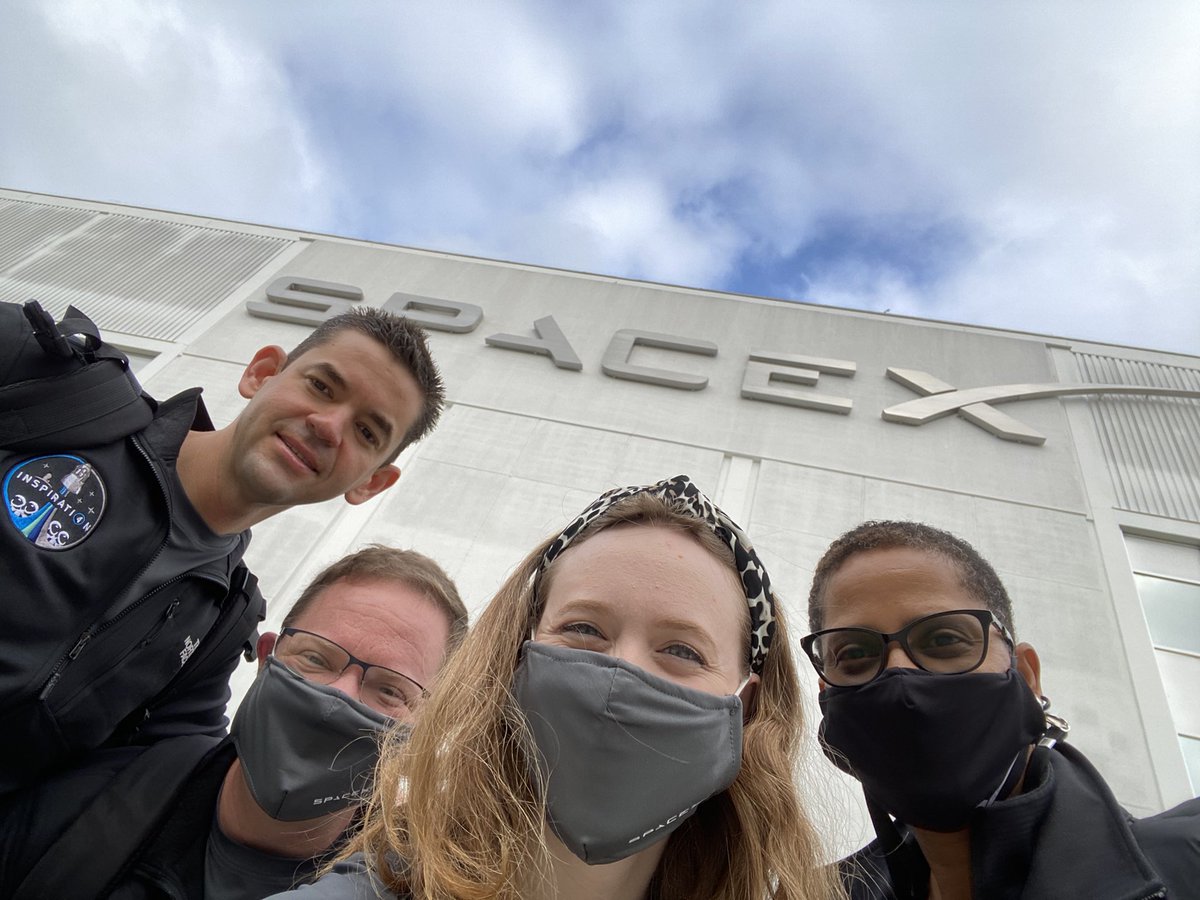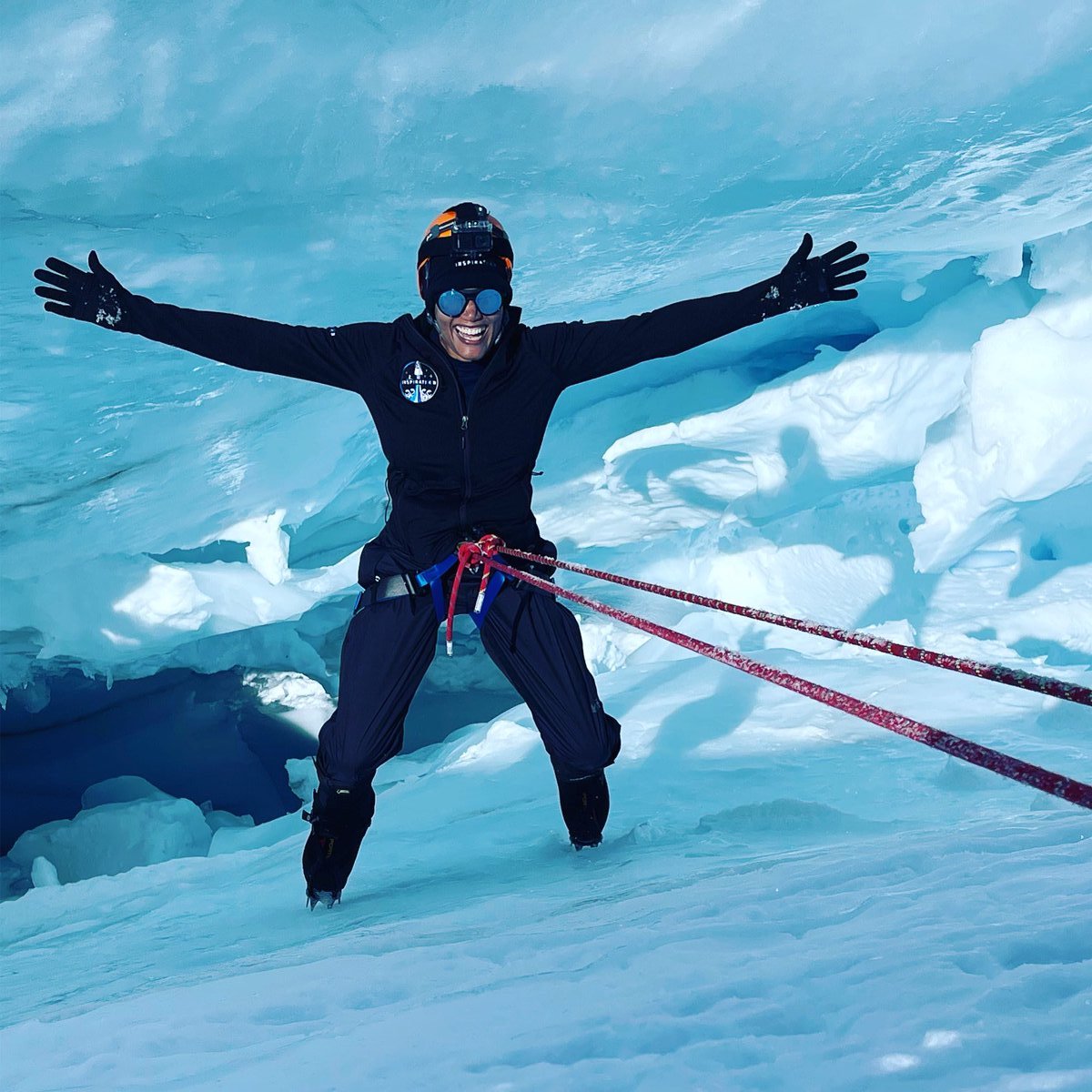The Inspiration4 astronauts are training hard for their private launch on a SpaceX rocket
Four private astronauts have been strapped into a centrifuge, climbing mountains and learning how to fly a spacecraft ahead of their flight to space — the first-ever crewed space mission without any "professional astronauts" on board.
The crew is preparing to launch this upcoming September as part of the Inspiration4 mission aboard a SpaceX Crew Dragon spacecraft. The mission, privately chartered by billionaire Jared Isaacman to support St. Jude Children's Research Hospital, recruited three crew members in addition to Isaacman for the trip which will fly around the Earth for several days. The crew includes Isaacman, St. Jude physician's assistant and childhood bone cancer survivor Hayley Arcenaux, data engineer Chris Sembroski and geoscientist, science communicator and artist Sian Proctor.
And, since the crew was announced, they have been nonstop training and preparing for the mission that they seem to be very excited about. "It's something you dream of your entire life," Proctor told Space.com.
While the crew is made up of "non-professional" astronauts, or people flying to space who are not affiliated with NASA or any other space agency, that does not mean that they don't need to prepare thoroughly for their mission to space.
"If you look at the definition of an astronaut, it is somebody who has been selected for and is training for a spaceflight mission, and that's exactly what we're doing," Proctor said.
Related: Meet the contest-winning crew of Inspiration4
Training for a mission to space
To kick off the training for their spaceflight, the Inspiration4 crew began with a centrifuge. Soon after the crew was announced, the private astronauts strapped in, one at a time, to the centrifuge at The National Aerospace Training and Research (NASTAR) Center in Pennsylvania. In this training initiation, they were spun in circles and experienced the G-forces (gravitational forces) that they are expected to experience during their actual trip to space.
Breaking space news, the latest updates on rocket launches, skywatching events and more!
The centrifuge spin was "awesome," Proctor told Space.com. "Everything's awesome. I'm just gonna say that."
Following their ride in the centrifuge, the crew geared up for the next daunting step in their training: a perilous hike. The four private astronauts hiked up the side of Mount Rainier in Washington to a base camp thousands of feet above sea level. Backpacking trips like this are a tradition and an important part of training for astronaut crews ahead of their missions.
These outdoor trips put the crew into an environment that requires them to work together and cope with challenges and unexpected obstacles. While the side of a mountain is different from the inside of a spacecraft, such a trip can help crewmates to learn how to support one another, communicate and push through difficult circumstances together.
"NASA astronauts have a history of engaging in crew cohesion and bonding" through such trips, Proctor said. "You're doing something that's kind of unique and out of your comfort zone, then you get to the point where you're like, 'I don't know if I can continue,' but then you reach in deep and you move forward, and you keep going. And that is part of the bonding experience."
Amazing time w/ @inspiration4x team on Mt. Rainier this weekend. All objectives complete. I am so impressed. Thanks @RMIExpeditions & @EViesturs for the tough & rewarding experience. pic.twitter.com/nnuEpjhVncMay 4, 2021
"It's not life-threatening. It's more just that whole idea of endurance and survival and relying on each other and, and bonding through that," Proctor added. Proctor likened the training to her many experiences as an analog astronaut, during which she has lived with crews of researchers in remote facilities on simulated space missions. Proctor once spent four months living in a simulated Mars mission at the HI-SEAS (Hawaii Space Exploration Analog and Simulation) research facility on the slopes of Mauna Loa in Hawaii.
After braving the elements together in Washington state, the crew all convened for the first time at SpaceX headquarters in Hawthorne, California. There, they went on to begin the more in-depth training for the mission.
Proctor, who will be the mission's pilot, practiced and ran through what it will be like to actually fly SpaceX's Crew Dragon vehicle. "The Dragon capsule is autonomous," she said. So, "ideally, it's going to fly and do the mission and all of that … and me as a pilot, my job is to make sure that everything that's supposed to happen in a nominal way does."
She added that she will work to fly the craft with Isaacman, who will command the mission. "Together we work the system," she said. "It's very similar to flying an airplane where … he's in the left seat as the commander and then I'm in the right seat, but we're both pilots."
This training at SpaceX continued to build the bonds of the crew. "It's really important to back each other up," Proctor said, "and really understand how we work as a team."
"I think that's one of the things that, when people think about NASA and the astronauts, a lot of times we think of them as individuals, but really they're a crew. They've trained together to become this integrated system … you understand what everybody's job is, but you also understand how to back up everybody," she added.
Now, with approximately four months until the mission is set to take off in September, the team still has a lot of training ahead of them to ensure that they are all as prepared as possible for their trip around Earth. One of the upcoming training that Proctor is specifically looking forward to is also something that NASA astronauts do ahead of their flights, which is training flying jet planes.
NASA astronauts have to log a certain number of hours flying T-38 jets and, according to Proctor, their training is heavily inspired by and modeled after NASA astronaut training. "As a kid, I always wanted to fly a fighter jet," she said, "so I'm really excited about the fact that this is part of our training."
Email Chelsea Gohd at cgohd@space.com or follow her on Twitter @chelsea_gohd. Follow us on Twitter @Spacedotcom and on Facebook.

Chelsea “Foxanne” Gohd joined Space.com in 2018 and is now a Senior Writer, writing about everything from climate change to planetary science and human spaceflight in both articles and on-camera in videos. With a degree in Public Health and biological sciences, Chelsea has written and worked for institutions including the American Museum of Natural History, Scientific American, Discover Magazine Blog, Astronomy Magazine and Live Science. When not writing, editing or filming something space-y, Chelsea "Foxanne" Gohd is writing music and performing as Foxanne, even launching a song to space in 2021 with Inspiration4. You can follow her on Twitter @chelsea_gohd and @foxannemusic.



